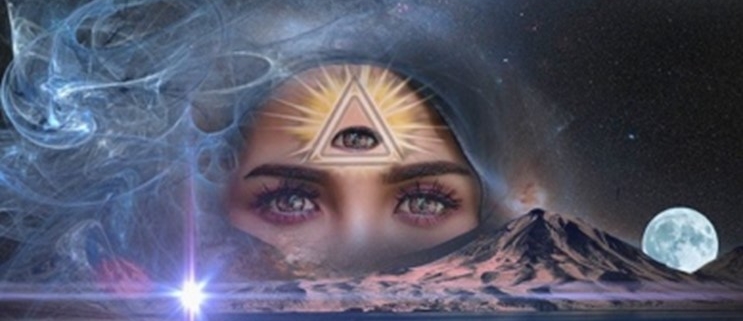If Lovecraft used horror to introduce the idea of contact with an alien “other” to the masses, the growing popularity of science fiction in the twentieth century established ET as a stereotype in popular entertainment. It’s hard to imagine, but our great-grandparents would have had no idea what the phrase “little green men” was supposed to mean.
Nineteenth century forerunners like Jules Verne and H. G. Wells demonstrated that fiction based on speculative science would sell. Verne’s 1865 From the Earth to the Moon was the first major work to feature space travel; in 1898, Wells produced the first ET invasion story with his classic The War of the Worlds. Another Welles—Orson—transformed The War of the Worlds into a compelling radio drama on Halloween Eve in 1938, although the story that the program caused a national panic is, sadly, a myth. (Newspapers lost a lot of advertising revenue to the new medium during the Great Depression and took advantage of an opportunity to condemn radio—an early example of “fake news.”)
The popularity of the genre took off in the 1920s with the arrival of the first pulp magazines that featured science fiction, such as Amazing Stories, Weird Tales, Astounding Stories, and Wonder Stories. The Golden Age of science fiction arrived in 1937 when John W. Campbell took over as editor of Astounding Science Fiction. Campbell is widely considered the most influential editor of the early years of the genre, publishing first or early stories by Isaac Asimov, Lester del Rey, Robert Heinlein, A. E. Van Vogt, and Theodore Sturgeon, thus helping to launch the careers of many of the biggest names in 20th century science fiction.
Despite his insistence that his writers research the science behind their stories, Campbell had an interest in parapsychology that grew over the years. Writers learned that with topics like telepathy helped them sell stories to Astounding. In 1949, Campbell discovered L. Ron Hubbard and published his first article on Dianetics, which Campbell described as “one of the most important articles ever published.” He suggested to some that Hubbard would win the Nobel Peace Prize for his creation.
Three years before selling Campbell on Dianetics, Hubbard participated in an event that comes from the “you can’t make this stuff up” file: From January to March, 1946, Hubbard and Jack Parsons, rocket engineer and one of the founders of the Jet Propulsion Laboratory, performed a series of sex magic rituals called the Babalon (sic) Working. It was intended to manifest an incarnation of the divine feminine, a concept based on the writings of Aleister Crowley and described in his 1917 novel Moonchild.
So, through L. Ron Hubbard and Joseph Campbell, science fiction fans were connected to the Two Degrees of Aleister Crowley just as readers of gothic horror were through the works of H. P. Lovecraft and his successors.
Campbell managed to capture the paranoia and dread that marked Lovecraft’s work in his classic 1938 novella Who Goes There? The story has been adapted for the big screen three times—1951’s The Thing from Another World (featuring a young James Arnett, TV’s Matt Dillon, as the creature), 1982’s The Thing, starring Kurt Russell, and a 2011 prequel, also titled The Thing.
The Kurt Russell film, set in Antarctica, draws on key Lovecraftian themes—an ancient extraterrestrial that poses an existential threat to all life on Earth, the loss of self as one is assimilated by the monster, and a claustrophobic setting. The Thing was set at an Antarctic research station, where the bitter cold confines most of the action to the interior of the base. The paranoia-inducing monster imitates its victims perfectly, like the ETs in the 1956 classic Invasion of the Body Snatchers, which causes the base scientist, played by Wilford Brimley, to snap when he realizes just how quickly the creature could destroy the earth if it escaped the Antarctic—which makes Brimley’s character a lot like the protagonists in many of Lovecraft’s stories.
Even the setting near the South Pole recalls Lovecraft, whose classic novella At the Mountains of Madness introduced a theme that’s been revisited over the years in films like The X-Files and Alien vs. Predator—there’s something beneath the ice down there that shouldn’t be disturbed.
It is absolutely necessary, for the peace and safety of mankind, that some of earth’s dark, dead corners and unplumbed depths be let alone; lest sleeping abnormalities wake to resurgent life, and blasphemously surviving nightmares squirm and splash out of their black lairs to newer and wider conquests.
Not coincidentally, UFO enthusiasts claim to find alien craft half-buried in the Antarctic on a regular basis these days.
The point is that by the time Campbell began to elevate science fiction out of the swamp of pulp fiction in the late 1930s, the concept of unfriendly or uncaring ETIs intervening in Earth’s affairs was already several decades old. By the late 1940s, it was already fodder for kiddie cartoons; Marvin the Martian, with his Uranium PU-36 Explosive Space Modulator, debuted in 1948, just one year after Kenneth Arnold’s UFO sighting at Mount Rainier and the famous crash near Roswell, New Mexico.
In the decades since, science fiction has become, in the words of Dr. Michael S. Heiser, “televangelism for the ET religion.” People looking in from outside the genre may assume sci-fi is all rockets, ray guns, and lasers, but a lot of it theological. Films like Prometheus, Mission to Mars, Knowing, and 2001: A Space Odyssey, for example, conflate space travel, extraterrestrial intelligence, and religion by offering answers to the big questions the world’s religions have been addressing since the beginning of time—where we come from, why we’re here, and where we go when we die.
While human interaction with ETIs has been a stock premise for television for decades, sometimes played for drama and sometimes for laughs. And the mix of space travel and religion has never been off-screen for long. The original Star Trek reimagined the gods of Greece and Rome as powerful aliens when they encountered Apollo in the second season episode “Who Mourns for Adonais?”
Other entries in the Star Trek franchise likewise explored religious themes. The pilot episode of Star Trek: The Next Generation introduced Picard’s godlike nemesis, Q, who eventually appeared in a dozen episodes of TNG, Star Trek: Deep Space Nine, and Star Trek: Voyager. A major plot arc of DS9 involved Commander Sisko’s role as the Emissary of the Prophets, the “wormhole aliens” worshiped as gods on the planet Bajor.
The 1994 film Stargate kicked off a long-running science fiction franchise that centered on the return of the old gods to Earth. In the Stargate universe, the deities of the ancient Near East were parasitic, technologically advanced ETIs called the Goa’Uld who ruled the earth thousands of years ago as gods. The movie follows a team of explorers who travel through a stargate to discover a world controlled by a brutal entity posing as the Egyptian sun-god Ra, whose spaceship looks a lot like the Great Pyramid of Giza.
The television series Stargate SG-1 and its spinoffs continued that theme. The Norse pantheon was introduced in the series as the Asgard, whose appearance inspired stories of the alien Greys (a look that just doesn’t work for Thor), and who, contrary to their reputation among ET contactees, side with humanity in the war against the Goa’Uld.
In other words, the Stargate franchise built an entire alternate history for the main religions of Earth: all of their gods are aliens. We don’t recall how they explained why the gods stopped visiting Earth for a couple thousand years, and of course they never touched the third rail of Hollywood, Jesus.
Considering what the series did to the pagan gods, it’s just as well.
SG-1 ran from 1997 through 2007, surpassing The X-Files as the longest-running science fiction television series in North America until it was passed by Smallville in 2011, a series that featured another godlike ETI, Superman.
Battlestar Galactica had two series runs, the first in 1978–79 and a second that ran for seventy-five episodes between 2003 and 2009. The original series was notable for being a thinly veiled dramatization of Mormon theology, including a council of twelve, marriage for “time and eternity,” and a planet named Kobol.
Religion was a prominent theme in the reboot, too; the twelve “Lords of Kobol” were the gods of the Greco-Roman pantheon (Zeus, Hera, Apollo, Ares, Athena, Poseidon, etc.), and the twelve occupied planets of humanity were named for the signs of the zodiac.
Interestingly, the Cylons, sentient robots who rebelled against their human masters, were depicted as monotheistic, a religion that looked a lot like a cross between Christianity and Judaism—basically Christianity minus Christ. Except for the part where they attempted genocide and nearly destroyed the entire human race, but that’s not surprising for a Hollywood view of the God of Abraham, Isaac, and Jacob.
The reimagined Battlestar introduced a new element: Humanoid Cylons so lifelike they were indistinguishable from humans. As the series developed, it was revealed that there were only seven models, but many copies of each. Model number One, Cavil, deceives the other Cylons by hiding the identities of the remaining humanoid Cylon models, the “Final Five.” Finding the unknown Cylons was a major plot thread in the series, and their ultimate disclosure to the human fleet was a turning point that led humanity to salvation on a new Earth.
Interestingly, that Cylon plot twist draws from several Western occult traditions, especially as they’ve been syncretized into Theosophy. Madame Blavatsky wrote in The Secret Doctrine that seven “rays” together form all energy and all forms produced by it—in other words, you, us, and everything around us. These “rays” are also intelligent beings called the Dhyan Chohans.
Since at least the early 1970s, however, some New Age leaders like Elizabeth Clare Prophet have been teaching that there are “five secret rays,” which “promote an action of detail, the final sculpturing of the mind and consciousness in the perfect image of the Christ.” We don’t know for sure why the writers of the reimagined Battlestar added the Final Five plot line, but we don’t believe the parallel to current New Age thinking is a coincidence.
And we are not coincidence theorists.
Comic books have also mined human theology for decades. Beyond the obvious, such as Marvel making a superhero out of the Norse storm-god Thor (who is a cognate for Jupiter, Zeus, and Baal—in other words, same god with different names), researcher and author Christopher Knowles makes a strong case in his book Our Gods Wear Spandex: The Secret History of Comic Book Heroes for comic book heroes as a modern rebranding of ancient mythological archetypes.
This culture is far more influential (and insidious) than most realize. Most contemporary action movies take their visual language from comic books. The rhythm of constant hyper-violence of today’s action movies comes straight from Jack Kirby. Elvis Presley idolized Captain Marvel Jr., to the point of adopting his hairstyle.
[…]
Although most of us don’t realize it, there’s simply nothing new about devotion to superheroes. Their powers, their costumes, and sometimes even their names are plucked straight from the pre-Christian religions of antiquity. When you go back and look at these heroes in their original incarnations, you can’t help but be struck by how blatant their symbolism is and how strongly they reflect they belief systems of the pagan age. What even fewer people realize is that this didn’t occur by chance, but came directly out of the spiritual and mystical secret societies and cults of the late 19th century—groups like the Theosophists, the Rosicrucians, and the Golden Dawn.
Popular movies based on comics or graphic novels featuring the ETI/religion theme include the Transformers franchise, X-Men Apocalypse, and the Guardians of the Galaxy films. The common thread: ETIs exist, they’re coming to Earth, and it’s either going to be awesome or apocalyptic when they get here.
And how has eighty years of pop culture pushing the ETI meme shaped our ideas about contact? Seth Shostak, lead astronomer for the SETI (Search for Extraterrestrial Intelligence) Institute, hit the nail on the head:
I think we are ready for ET contact in some sense, because the public has been conditioned to the idea of life in space by movies and TV. And if you go into a classroom with a bunch of 11-year olds and ask them, “How many of you kids think there are aliens out there?” they all raise their hands! Why? Is it because their parents have been educating them about astrobiology? No. It’s because they’ve seen them on TV!
[…]
I think that Hollywood is by far the biggest term in the equation of the public’s reaction to confirmation of alien life.
It’s a concept that’s been drawn from nineteenth century occult groups and filtered through pulp magazines, sci-fi novels, radio dramas, cartoons, comic books, graphic novels, movies, and television, packaged as popular entertainment and sold as a worldview to the last four generations. How long before an official announcement that the ETIs—the old gods—are finally back?
One last thing: Isn’t it odd that the lead astronomer of the group searching for ETIs is named for the chaos god, Seth (Set)? And that the group’s acronym, SETI, is Egyptian for “man of Set?” Should we be concerned that Set-Typhon, the dark lord of chaos, is the one Aleister Crowley’s successor Kenneth Grant believed is the spirit of our age? And that he’s apparently reaching out to Earth from somewhere in the direction of Sirius?
Most likely another coincidence. It’s probably fine.

Derek Gilbert Bio
Derek P. Gilbert hosts SkyWatchTV, a Christian television program that airs on several national networks, the long-running interview podcast A View from the Bunker, and co-hosts SciFriday, a weekly television program that analyzes science news with his wife, author Sharon K. Gilbert.
Before joining SkyWatchTV in 2015, his secular broadcasting career spanned more than 25 years with stops at radio stations in Philadelphia, Saint Louis, Little Rock, and suburban Chicago.
Derek is a Christian, a husband and a father. He’s been a regular speaker at Bible prophecy conferences in recent years. Derek’s most recent book is The Great Inception: Satan’s PSYOPs from Eden to Armageddon. He has also published the novels The God Conspiracy and Iron Dragons, and he’s a contributing author to the nonfiction anthologies God’s Ghostbusters, Blood on the Altar, I Predict: What 12 Global Experts Believe You Will See by 2025, and When Once We Were a Nation.





Leave a Reply
Want to join the discussion?Feel free to contribute!